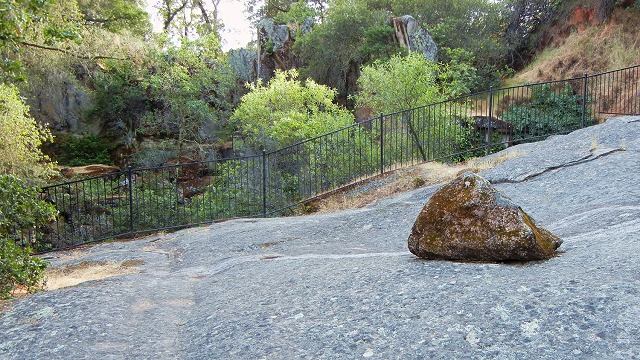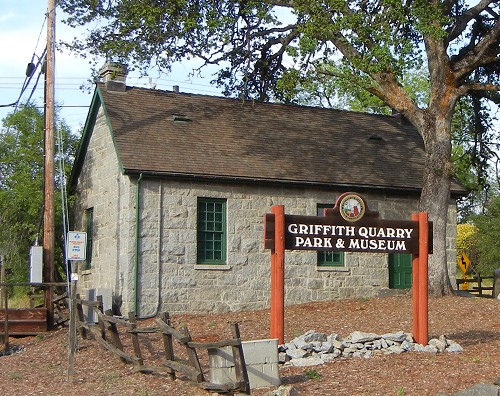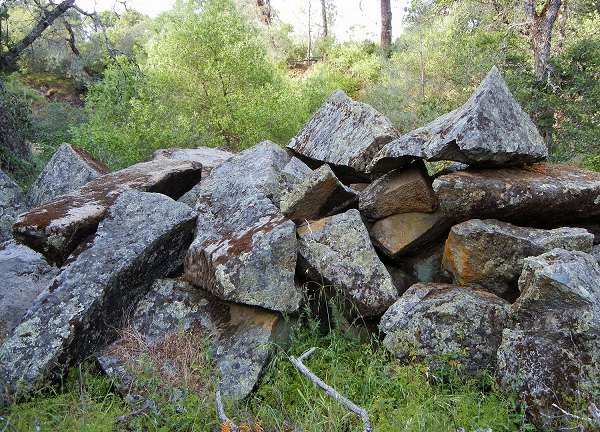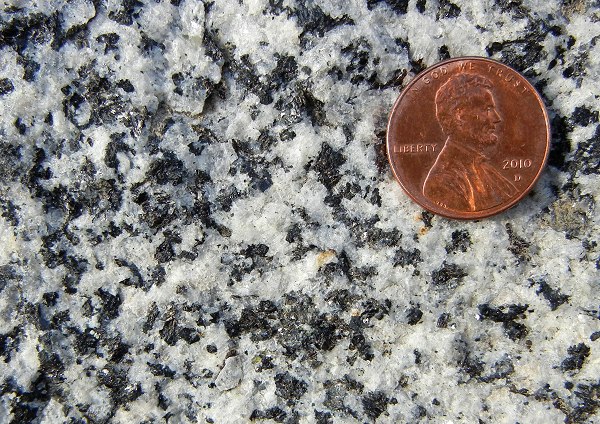As the young state of California began to prosper, it came time to make substantial buildings. Thus the opportunity arose for the difficult art of quarrying and finishing granite to supply the need for good building stone. The High Sierra is made of granite, but in the 1800s it was remote and challenging country. (Note: By "granite" I mean what geologists refer to as granitoid, a wide range of rock types that qualify as commercial granite.)
Sierra granites represent the deep-seated bodies of magma that supplied the lava for a long chain of volcanic islands, rather like Japan or Indonesia today, during the Mesozoic Era some 80 to 160 million years ago. However, an accident of California geology placed an outlier of the High Sierra granite near Sacramento at the edge of the foothills.
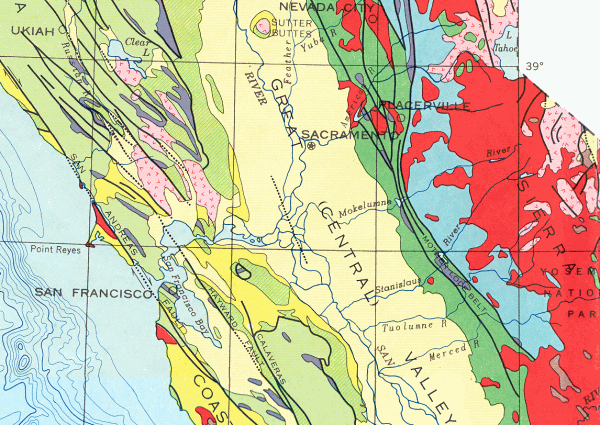
Quarrying of this granite began early in the 1850s, but the industry really burgeoned when a Welsh immigrant experienced in stonework, named Griffith Griffith, picked a good outcrop and started a quarry near Rocklin in 1864. He named his company town Penrhyn after the old Welsh slate district. (Today's it's Penryn.) Here's where it fits on the state geologic map.
The Griffith Quarry soon landed contracts from governments and was off to the races. Parts of the Capitol building in Sacramento, the foundation of the San Francisco Mint and many old unsung railroad beds consist of Griffith stone.


